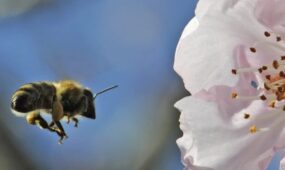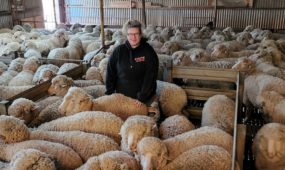Hydraulic shears system solves vine dieback dilemma
Primary Industries
The first commercial units of a hydraulic system for the treatment of trunk diseases and dieback in grape vines will begin production next month.

Sign up to receive notifications about new stories in this category.
Thank you for subscribing to story notifications.
Agricultural entrepreneurs Angus Murray and Charles Rosback came up with the MaxiCut hydraulic shear concept to rejuvenate affected vineyards in 2015 and, after successful trials in South Australian vineyards, the design was finalised in June this year.
The company, based in the Adelaide Hills wine region, will begin production of its first 10 orders in November.
MaxiCut shears enable cuts through cordons and trellis wires to achieve accurate and efficient removal of infected or dead wood from a vine. It allows precision cuts with clean- faced surfaces for wound fungicide application.
The technology can be used to rejuvenate vineyards affected by dieback and diseases such as Eutypa and Botryosphaeria. It can also be used for cane conversions and pre-grafting.
The dual-row system is a three-person operation: one driving the tractor and two handling the shears on a gantry suspended over each row.
Each unit can service about 200 hectares of vineyards each year.
Murray said the unique MaxiCut system was much safer, faster and more effective at removing infected vines than previous methods, which primarily involved the use of chainsaws.
He said the hydraulic shears were big and powerful enough for the large cuts but also agile enough for the smaller work.
“We made them so you can turn the tool to any angle you need so it allows for very precise cutting and very clean cuts so there is no splintering or squashing of the material, which is one of the key benefits when you’re trying to apply a sealer over the wound to protect the disease from re-entering the vine,” Murray said.
Eutypa trunk diseases are a global problem and affect many significant markets.
In Australia, it is estimated that Eutypa costs the wine industry $20 million a year in the shiraz variety alone.
“Reworking vineyards infected with trunk diseases has traditionally been an expensive and labour intensive operation,” Murray said.
“The MaxiCut system allows for crops to be maintained while a new trunk is grown to replace the existing infected trunk.
“Following initial work in the first year of treatment, a water shoot is trained from the base of the trunk to eventually replace the original with new trellis wires installed. The vine shears are then used to remove the rest of the infected vine in the second or third year.
“Using the refurbished trellising wire, canes are tied down and the process is complete.”
MaxiCut last week won a 2017 Wine Industry IMPACT Award in the grape growing category at a ceremony in Adelaide.
Murray said the award and several field trials in the Adelaide Hills, Barossa Valley, McLaren Vale, Langhorne Creek and Coonawarra districts had generated a great deal of interest in a state that is consistently responsible for about 50 per cent of Australia’s annual wine production.
“We’re getting inquiries from Tasmania, New South Wales, Victoria and we’ve had inquiries from over in California as well,” he said.
“We’re planning to have pre-orders for the international market by June next year.”
The vine shears are driven from the three-point linkage hydraulic power pack and gantry off a tractor with weight eliminating suspension devices making the 21kg tools featherweight for the operator.
Due to the use of a bypass blade design, kick back is eliminated, allowing for all force to be absorbed by the tools rather than the operator. This makes the vine shears practical and easy to use.
Rosback said safety was also a major consideration when designing the system, which will be manufactured entirely in South Australia.
“After years of seeing people hack dangerously with chainsaws into vines around wire we knew there had to be a safer and more efficient solution,” he said.
Jump to next article



